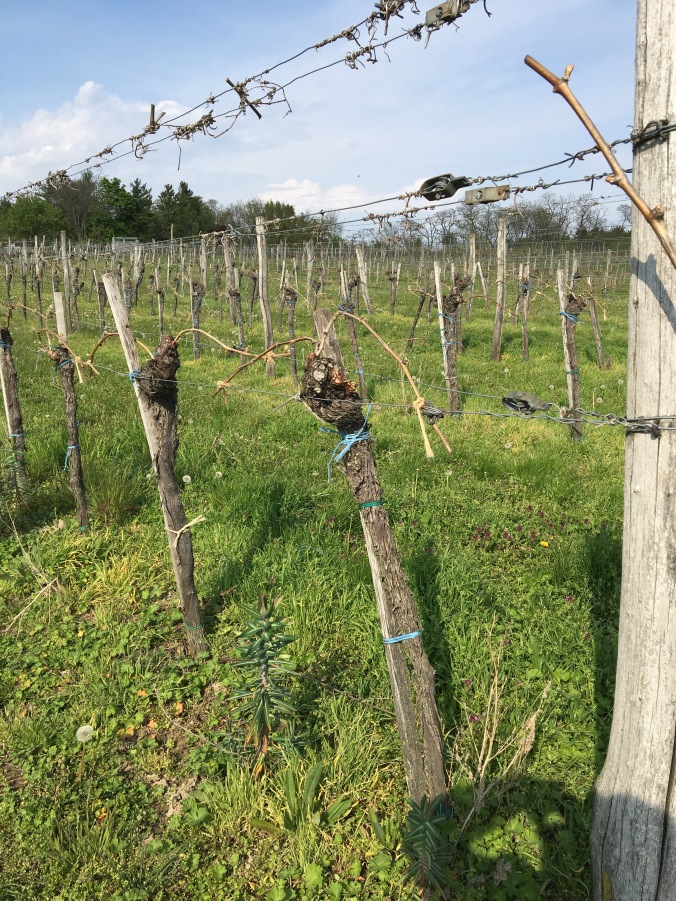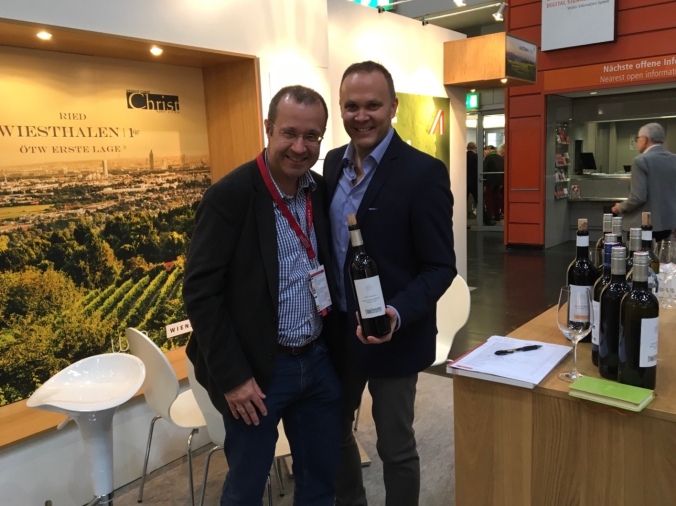This post is so overdue if it were a library book the fine would be equivalent to the GDP of small country!
The truth is, in the fast paced world of social media I went for the instant gratification of the Instagram post and story rather than the reflective and therefore more time consuming yet rewarding Blog post.
Two things changed last week….
(1) I posted for the first time since 30th July last year! Like the rest of the world, I’m on Lockdown and have had a little more time on my hands!
(2) I received really positive feedback from some of my followers who are working on the front line in the battle against Coronavirus in the NHS who said they enjoyed reading my Post on downtime from their valiant duties!
I can’t deny that I get enormous pleasure from writing and spurred on by this positive feedback will commit to upping the anti and delivering more content henceforth!
My second visit to Vienna was in March 2017 and while there on work business in my previous non wine life I was determined to visit a few heuriger (wine taverns) and learn as much about Viennese wine as I could!
In a previous post I covered Viennese Wine; The best of Austrian wine from Grüner Veltliner to Gemischter Satz!Part 1 – Weingut Weininger while on the same trip, in this post I will take an in depth look at the wines of Rainer Christ. A winemaker who has a special place in my heart as while searching for his wines on my return to England several years later it led me to Alpine Wines, http://www.alpinewines.co.uk , his UK distributor.
As I started my new life as a self employed wine consultant, last year, it was a chance meeting with Alpine Wines that led to me working with them as trade Business Development Manager.
Back to the that awesome visit to Weingut Christ in 2017; Weingut Christ is located in the Jedlersdorf (21st District) about a 20 min cab ride from the Spanish Riding School our base in the centre of Vienna.
Tasting a range of his wines and learning about the revival of the Gemischter Satz and its subsequent DAC, I marvelled that Vienna is the only city in Europe to have vineyards within its city limits (Forty Hall in Enfield being the UK exception).

Vineyards in the foreground with the high rise blocks of Vienna in the background

Spring is a great time to visit the vineyards as not too busy and it affords the opportunity to see the vines up close, defying spring frosts to break into bud burst, the first signs that the new vintage is on its growing cycle…..
Rainer’s vineyards are only located on the left bank of the Danube. Mainly around the Bisamberg. His philosophy is trying to show the individual identity of the wine combined with sustainable farming; It’s a fact that Viennese vineyards have been free of insecticides for 20 years! NO herbicides are used either. The trend across Europe is that wine acreage is decreasing but in Vienna this trend is reversed!
Some of the highlights on this trip were these two! There is nothing quintessentially more Viennese than Gemischter Satz. A field blend that used to be popular in Vienna in the last century. Different and complimentary grape varieties were planted together in the vineyard, then harvested and co-fermented together. It helped the winegrower to guard against crop failure through under or over ripe grapes. It fell out of fashion as single variety wines became more popular as winemakers strove to show off their wine-making prowess and new skills that they had acquired. Thanks to a small band of winemakers (Rainer Christ one of them) this Viennese speciality has not only been revived but has its own appellation in the form of the Wiener Gemischter Satz DAC.
Rules stipulate that the grapes must be grown in a Viennese vineyard, with at least three quality grape varieties used; From Grüner Veltliner, Riesling, Chardonnay, Weissburgunder, Welschriesling and Neuburger but aromatic varieties such as Müller Thurgau, Sauvignon Blanc, Traminer and Gelber Muskateller are also included. All grapes must be grown, harvested and pressed together. The largest portion of any variety is limited to 50% with the third largest proportion being at least 10%.
This Gemischter Satz comprises; Grüner Veltliner, Riesling, Chardonnay, Traminer, the super rare Roter Veltliner and Welschriesling.
The grapes are harvested by hand. Careful handling in the winery focuses on maintaining the varietal character of the wine. Processing is by gravity without pumping and gentle pressing is conducted by use of a pneumatic press. The wine is matured in steel tanks for 6 months and is sterile filtered and is therefore suitable for Vegans.
Tasting note:
Refreshing acidity and minerality with a fine spicy seasoning, notes of green apple, and ripe citrus notes on the nose more evident on the palate. A medium plus finish on the length.
Apart from tasting great and being the signature wine of Vienna there’s another important side to Gemischter Satz, I remember Rainer saying that there’s a greater biodiversity in one hectare of a Gemischter Satz vineyard than in a hectare of Austrian forest!
The Bruch Grüner Veltliner grows on the Bisamberg on a mixture of slate and ice age gravel soils which lend the wines a lovely minerality which fuse with a complex range of citrus notes including white grapefruit and lemon with signature white pepper spice. A great food friendly wine in much the same way that Champagne is happy to handle those bête noire foods like eggs and asparagus.
Mephisto 2014 was a blend of 50% Zweigelt/40% Merlot and 10% Cabernet Sauvignon. A Viennese style Bordeaux Blend if you like! The percentages in the blend change each year to reflect the house style. A very good wine with long finish, great balance and length. Unfiltered with lots of juicy black and red fruits and lots of gentle spice with silky tannins.
The Zweigelt 2014 another all rounder like the Grüner Veltliner had 25 months in small French oak barrels with a light toast. It delivered pronounced aromas of pepper spice, and blackcurrants wrapped up in a toasty cedar and vanilla envelope.
While visiting the tasting room and winery I also had the chance to eat like a King in his Heuriger and sample more of his wines with local Viennese cuisine. It’s a must if you ever get to visit this wonderful city!! It really was an epic way to end some of the most memorable hours that I spent in Vienna and I can’t wait to visit again when the pandemic is over!!
Epilogue:
Since my visit in 2017 I met Rainer again at Prowein in Dusseldorf in 2019 and was due to meet him again at this year’s event as part of the buying trip for Alpine Wines until it was postponed because of the Coronavirus pandemic.

Re-acquainting myself with Rainer and his wonderful wines at Prowein 2019
I couldn’t possibly conclude this piece without waxing lyrical about my new favourite Christ wine…
I showed that this at the Wines of Austria trade tasting at the Science Museum in London in February 2020 with Alpine Wines and then featured it at a tasting for the Dulwich Wine Society a month later to a rapturous reception.
Christ Vollmonden Weissburgunder 2017 (Wien) – Pinot Blanc
2017 was a very warm vintage with rich wines
Considered by Austrian wine expert Stephen Brook to be Christ’s most intriguing wine; The oaked VOLLMONDWEIN (full moon wine) from WEISSBURGUNDER (Pinot Blanc) grown on a limestone plateau high up on the Bisamberg 350m above sea level. It’s a cool site that is harvested during the full moon. This single vineyard known as the Ried Falkenberg has chalky mineral subsoil composed mostly of mussel limestone sediment. This makes it the perfect terroir for the Pinot family.
After pressing, the juice is exposed to a smidgen of skin contact for anything up to 4 hours which enables Rainer to keep SO2 to a minimum. Natural yeasts are used for fermentation which is 75% in stainless/steel tanks and 25% French oak barrels. After fermentation the wine is left on its fine lees for between 6-10 months.
The wines are suitable for Vegans and Vegetarians as Vegan certified as no fining and sterile filtration.
These wines have good ageing potential with it not unusual to be still drinking well 10-12 years after release.
It’s no secret that I love white Burgundy and this wine has a rich mouthfeel that is so Burgundian in style, yet with a lovely freshness and balance that is the sign of quality wine-making and the limestone sediment rounds the party off with a searing minerality.
Pair this with Mushroom risotto, veal. guinea fowl, Poulet-Bresse, rabbit, mushroom dishes and hard cheese
abv 13.5%
R/S 6.9 g/L
T/A 5.8 g/L
£24.76 from Alpine Wines http://www.alpinewines.co.uk






Amazing blog mate … great times, great wines and great company! Seams a life time ago now … miss those times
Get Outlook for Android
________________________________
LikeLike